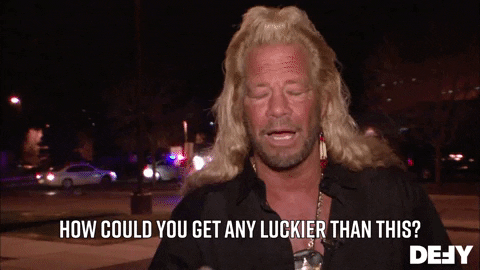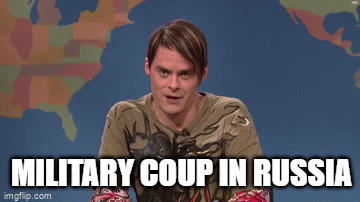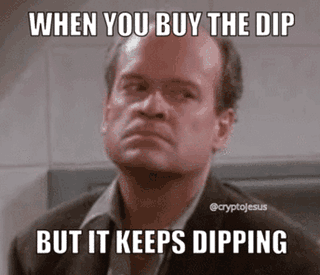All Out June 30th: Russian Coup
As we’re sure you’re aware, over the weekend there was an attempted coup in Russia. Yevgeny Prigozhin, which has a mercenary army, marched on Moscow in what seems to be an attempt at removing Putin. We’re not going to go into what happened, you can read about it elsewhere. The interesting thing is that it happened over the weekend when markets were closed. Who knows how markets would have reacted, the war in Ukraine seems to be unimportant to markets. However, the threat of a coup in Russia with the possibility of mercenaries gaining control of nuclear weapons is a different story. We know we’re writing about an active war in which many people have lost their lives, loved ones, and have been displaced. That is not lost on us, but we wanted to use this as an example to talk about markets.
Crypto proponents often say that one of the benefits of crypto is that it’s possible to trade 24/7. However, having markets closed after 4pm and during the weekends has its benefits. It allows markets to digest new information before the next open. This is why companies tend to report earnings either before market open or after the close. Also, stocks will often be halted when there is a pending announcement. This is done in order for market participants to digest the news and then price the stock accordingly. In fact these pauses are so important that exchanges have automatic halts based on volatility. This is done on single stocks and the index as a whole. There are automatic price halts at 7%, 13% and 20%. These are so called market circuit breakers and are designed to let markets “take a breather” and digest information. If the first two (7% and 13%) happen before 3:25pm then the market will halt for 15 minutes and resume trading. If the 20% circuit breaker is triggered, then the market will stop trading for the rest of the day.
If the coup had happened during market hours who knows what would have happened. Markets could have dropped heavily or brushed it off. We’re glad it was resolved during the weekend and we will never know what would have happened.

FDIC Insured Billions In Deposits For Sequoia, Other Top SVB Customers
If you recall, we wrote about the Silicon Valley Bank (SVB) collapse a couple of months ago. As a quick refresher (you can read more about it here) SVB got a lot of new deposits during 2020 and 2021 as the VC industry was booming. They took on a lot of interest rate risk by investing their excess cash in long dated treasury bonds. During 2022 as the Fed raised rates, treasury prices fell and SVB lost a lot of money on these investments. They looked to raise capital and spooked the markets. When depositors saw this they rushed to get their money out which essentially caused the collapse of the bank in 2 days. Regulators stepped in and took over the bank and the FDIC guaranteed all deposits.
The idea behind guaranteeing all deposits was to prevent further runs on other banks and to prevent contagion to other banks. The FDIC insures up to $250,000 per account, anything over that limit you are a creditor to the bank and it’s at risk if the bank fails. There have been new developments coming out that there were several big companies with hundreds of millions and even billions on deposit at SVB. Circle Internet Financial (the issuer of the stable coin USDC) had $3.34B, Sequoia (the VC fund) had $1.01B, Roku (the streaming stick) had $420M. You can fault mom and pop for going over the $250k limit and not knowing or not being proactive in diversifying their risk, after all even professional bank stock analysts didn’t see the collapse coming. You could even let Roku slip, they are a tech company and investments is not their business (although their CFO should definitely know better).
But Sequoia has no excuse. They are one of the largest and most prominent VC firms in Silicon Valley and in the world. They have absolutely no excuse for having $1B on deposit in a single bank. Not only was their money at risk (they got lucky the FDIC saved them), but they were foregoing millions of dollars in missed interest. If they had taken the prudent route and invested that billion in short term treasuries (which carry no risk), they would be making around $50M in interest every year. We don’t know exactly how much interest SVB was paying on their accounts but we would guess pretty much close to 0%. So not only was their $1B at risk, but they were leaving $50M on the table. And all this coming from one of the most “sophisticated” investors in the Valley. This news comes a few short months after we found out they had invested north of $200M in FTX with minimal (barely any) due diligence.

Goldman Sachs advises fund managers to buy protection against market fall
We’ve seen a large rally in equity markets this year with the S&P 500 rising 14.92%. As markets rally investors get worried about potential pullbacks. The article talks about Goldman Sachs (GS) recommending fund managers to buy protection against market drops. They don’t exactly say what they would recommend but buying protection against market drops is hard. We’ve said several times that protecting against market drops is easy, you can just buy a put option on the market itself. What is hard is not losing money if markets don’t drop. Put options will protect you against market drops with certainty (assuming you buy the correct one), but this certainty comes at a price and it’s not cheap.
For example, an ETF that buys put options on the market (ticker: TAIL) is down around 9.4% this year. Another ETF that proclaims to hedge downside risks (ticker: CYA) is down roughly 47% this year. Like we said before the hard part about hedging market risks is not getting the payoff in the crash, rather it’s not losing money when markets don’t crash. The CBOE 5% Put Protection Index is an index which invests in the S&P 500 and buys put protection to hedge against market crashes. The index has underperformed the S&P 500 by around 3% per year and has only slightly improved the drawdown profile. Like we’ve written many times before, hedging against market crashes is easy, not giving it all up when there isn’t a market crash is the hard part.

CalPERS laser-focused on killing state fossil fuel divestment bill
Interesting development in ESG. California lawmakers are trying to pass a law to force CalPERS and CalSTRS (the two large pension funds in the state) to divest from their fossil fuel holdings. Both funds are actively trying to block the law from going through because it would “violate the fiduciary duty that you are all held personally responsible for”, according to CalPERS CEO.
This stands in sharp contrast with the recent trend in divestment from fossil fuel companies in the name of ESG. The argument for ESG has been that divesting will actually increase returns (which honestly doesn’t make much sense like we wrote about last week). CalPERS estimated that divesting from fossil fuels would cost the fund 3.6 basis points per year; which doesn’t sound like much but on a $466B fund that means roughly $327M per year.





